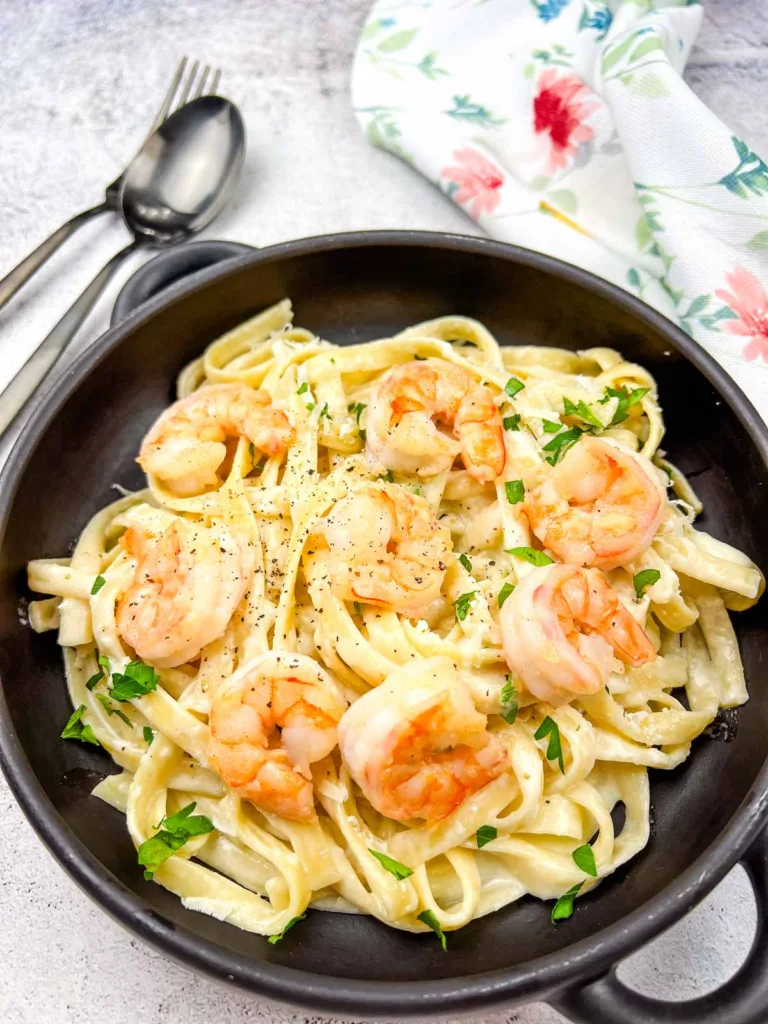If you suffer from digestive issues like Irritable Bowel Syndrome (IBS), you may have heard of the Low FODMAP diet. This diet is a temporary eating plan designed to help alleviate symptoms like bloating, gas, and abdominal pain. FODMAP stands for Fermentable Oligosaccharides, Disaccharides, Monosaccharides, and Polyols, which are types of carbohydrates that are not easily digested by some people.
The Low FODMAP diet involves eliminating high FODMAP foods for a period of time and then reintroducing them to identify trigger foods. This process can be challenging, especially when it comes to meal planning. However, with the right resources and guidance, it is possible to create delicious and satisfying low FODMAP meals. There are many low FODMAP meal plans available online, and you can also work with a registered dietitian to create a personalized plan that meets your nutritional needs.
When planning low FODMAP meals, it’s important to focus on foods that are low in FODMAPs but still provide essential nutrients like protein, fiber, and healthy fats. This may involve getting creative with substitutions and finding new recipes that fit within the guidelines of the diet. With a little bit of effort and experimentation, you can create a meal plan that supports your digestive health while still allowing you to enjoy delicious and satisfying meals.

Understanding Low FODMAP Diet
If you’re experiencing digestive issues such as bloating, gas, and abdominal pain, you may want to consider following a low FODMAP diet. FODMAPs are fermentable oligosaccharides, disaccharides, monosaccharides, and polyols, which are types of carbohydrates that can be difficult for some people to digest.
Importance of Low FODMAP Diet
A low FODMAP diet can be an effective way to manage symptoms of irritable bowel syndrome (IBS) and other digestive disorders. By eliminating high FODMAP foods from your diet, you can reduce your intake of the carbohydrates that are causing your symptoms. This can help alleviate bloating, gas, diarrhea, and constipation.
However, it’s important to note that a low FODMAP diet is not a long-term solution. The elimination phase of the diet should only last for two to six weeks, after which you should gradually reintroduce high FODMAP foods to determine which ones trigger your symptoms. Once you’ve identified your triggers, you can create a personalized diet plan that includes low FODMAP foods and limits or avoids high FODMAP foods.
Foods to Include and Avoid
To follow a low FODMAP diet, you’ll need to eliminate or limit certain high FODMAP foods. Here are some examples of foods to avoid or limit during the elimination phase:
- High fructose fruits such as apples, pears, and mangoes
- Dairy products such as milk, yogurt, and cheese
- Wheat products such as bread, pasta, and cereal
- Legumes such as beans, lentils, and chickpeas
- Sweeteners such as honey, agave, and high fructose corn syrup
On the other hand, there are plenty of low FODMAP foods that you can include in your diet. Here are some examples:
- Vegetables such as carrots, zucchini, and bell peppers
- Fruits such as bananas, oranges, and grapes
- Gluten-free grains such as rice, quinoa, and oats
- Proteins such as chicken, fish, and tofu
- Nuts and seeds such as almonds, walnuts, and pumpkin seeds
It’s important to note that everyone’s tolerance to FODMAPs is different, so you may need to experiment with different foods to find what works for you. Additionally, it’s important to work with a registered dietitian to ensure that you’re getting all of the nutrients you need while following a low FODMAP diet.
By following a low FODMAP diet and identifying your trigger foods, you can manage your digestive symptoms and improve your overall quality of life.
Meal Planning Basics
When following a low FODMAP diet, meal planning can be a helpful tool to keep you energized, meet your nutrition goals, reduce food waste, and save money. Here are some basics to get you started:
Creating a Weekly Plan
Creating a weekly meal plan can help you stay organized and on track with your low FODMAP diet. Here are some steps to follow:
- Start by deciding on your meals for the week. Make sure to include a variety of foods from each food group to ensure you are getting all the nutrients you need.
- Make a grocery list based on your meal plan. This will help you avoid buying unnecessary items and save money.
- Set aside time each week to prep your meals. This can include chopping vegetables, cooking grains, and marinating meats. Prepping your meals ahead of time can save you time during the week and make it easier to stick to your meal plan.
Balancing Nutrients
When planning your meals, it’s important to make sure you are getting a balance of nutrients. Here are some tips to ensure you are getting all the nutrients you need:
- Include a variety of fruits and vegetables in your meals. Aim for at least 5 servings per day.
- Choose lean sources of protein such as chicken, fish, tofu, and eggs.
- Incorporate healthy fats such as nuts, seeds, avocado, and olive oil into your meals.
- Choose whole grains such as brown rice, quinoa, and oats over refined grains.
- Limit your intake of processed foods, sugary drinks, and snacks.
By following these meal planning basics, you can ensure that you are getting all the nutrients you need while following a low FODMAP diet.
Sample Low FODMAP Meal Plans
If you’re following a low FODMAP diet, meal planning can help you stick to your dietary restrictions and ensure that you’re getting the nutrients you need. Here are some sample meal plans to help you get started.

Breakfast Ideas
- Overnight oats made with lactose-free milk, chia seeds, and a small amount of low FODMAP fruit like blueberries or strawberries.
- Scrambled eggs with spinach and gluten-free toast made with sourdough or spelt bread.
- Smoothie made with lactose-free milk, low FODMAP fruit like kiwi or pineapple, and a scoop of protein powder.
Lunch Ideas
- Quinoa salad with chicken, cucumber, and cherry tomatoes dressed with olive oil and lemon juice.
- Low FODMAP vegetable soup with gluten-free crackers and a side salad.
- Tuna salad made with lactose-free mayo, lettuce, and gluten-free bread.
Dinner Ideas
- Grilled salmon with roasted sweet potato and mixed greens salad dressed with olive oil and balsamic vinegar.
- Low FODMAP stir-fry with chicken, green beans, and bell peppers served over brown rice.
- Spaghetti squash with turkey meatballs and low FODMAP marinara sauce.
Snack Ideas
- Rice cakes with almond butter and sliced banana.
- Carrots and cucumber with lactose-free hummus.
- Low FODMAP trail mix made with macadamia nuts, pumpkin seeds, and dark chocolate chips.
Remember, these are just a few ideas to get you started. With a little creativity and some careful planning, you can enjoy a wide variety of delicious low FODMAP meals and snacks.
Tips for Successful Low FODMAP Meal Planning
Meal planning is an essential part of following a low FODMAP diet. With a little bit of preparation, you can make sure that you have delicious and nutritious meals throughout the week that won’t trigger your IBS symptoms. Here are some tips to help you plan your low FODMAP meals successfully.
Shopping Tips
Before you go grocery shopping, make a list of the low FODMAP foods that you need for the week. This will help you stay on track and avoid buying foods that you can’t eat. Here are some additional shopping tips:
- Stick to the perimeter of the grocery store where the fresh produce, meat, and dairy sections are located.
- Read food labels carefully and avoid foods that contain high FODMAP ingredients.
- Consider buying in bulk to save money on low FODMAP foods that you use frequently.
- Look for low FODMAP substitutes for your favorite high FODMAP foods.
Cooking Tips
Cooking your own meals is the best way to ensure that you’re following a low FODMAP diet. Here are some cooking tips to help you prepare delicious low FODMAP meals:
- Use herbs and spices to add flavor to your meals instead of high FODMAP ingredients like garlic and onion.
- Experiment with different cooking methods like grilling, roasting, and sautéing to add variety to your meals.
- Plan your meals in advance and batch cook to save time during the week.
- Use a food scale to measure your portions accurately.
Eating Out Tips
Eating out can be a challenge when you’re following a low FODMAP diet, but it’s not impossible. Here are some tips to help you eat out successfully:
- Research restaurants in advance and look for low FODMAP options on their menus.
- Don’t be afraid to ask your server questions about the ingredients in your meal.
- Choose simple dishes that are easy to modify to make them low FODMAP.
- Consider bringing your own low FODMAP snacks or condiments to add to your meal.
By following these tips, you can successfully plan your low FODMAP meals and enjoy delicious and nutritious food that won’t trigger your IBS symptoms.
Overcoming Common Challenges
When starting a low FODMAP diet, it’s common to face some challenges. Below are a few tips to help you overcome some of the most common ones.
Dealing with Cravings
One of the biggest challenges of the low FODMAP diet is dealing with cravings for high FODMAP foods. To help manage these cravings, try the following:
- Swap high FODMAP foods for low FODMAP alternatives: For example, if you’re craving something sweet, try a low FODMAP fruit like strawberries instead of a high FODMAP fruit like watermelon.
- Experiment with low FODMAP recipes: There are many delicious low FODMAP recipes available online. Try experimenting with new recipes to find ones you enjoy.
- Allow yourself small indulgences: It’s okay to have a small amount of high FODMAP foods occasionally. Just be sure to keep track of your portions and frequency.
Managing Time
Meal planning and preparation can be time-consuming, but it’s essential for success on the low FODMAP diet. Here are some tips to help you manage your time:
- Plan your meals in advance: Take some time each week to plan your meals for the upcoming week. This will save you time and stress during the week.
- Prep ingredients in advance: If you have a busy week ahead, prep ingredients like vegetables and meats in advance to save time during meal preparation.
- Use leftovers: Cook extra portions of meals and use the leftovers for lunches or dinners later in the week. This will save you time and money.
By following these tips, you can overcome some of the most common challenges of the low FODMAP diet and make your journey to better digestive health a success.
Conclusion
By following a low FODMAP meal plan, you can reduce gastrointestinal symptoms and improve your quality of life. However, it is important to work with a healthcare professional to ensure that you are meeting your nutritional needs and not eliminating too many foods from your diet.
Meal planning is an essential tool for success on the low FODMAP diet. By taking the time to plan your meals and snacks, you can ensure that you are eating a variety of foods and getting all of the nutrients your body needs.
When planning your meals, be sure to include a variety of low FODMAP foods from each food group. This will help you meet your nutritional needs and keep your taste buds happy. Don’t be afraid to try new recipes and experiment with different ingredients.
Remember to always read food labels and be aware of hidden sources of FODMAPs. This can include ingredients such as high fructose corn syrup, honey, and agave nectar.
Finally, be patient with yourself and don’t get discouraged if you experience setbacks. The low FODMAP diet can be challenging, but with time and effort, it can lead to significant improvements in your digestive health.





